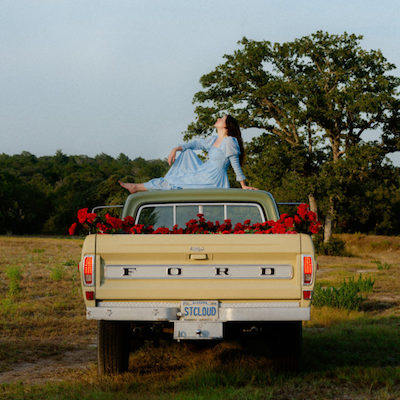
Secret Meeting score: 96
by Mark Jackson
In February 1972, Neil Young released the country-rock bible, Harvest. Containing his classics – Heart of Gold, A Man Needs a Maid, Old Man, and The Needle and the Damage Done – the record topped the charts on both sides of the Atlantic. It was the best-selling album of 1972 in the US and has amassed worldwide sales of over four and a half million to date. The album further cemented Young as an international star, and advanced his credibility as an unlikely ‘pop star’ following 1970’s staggeringly successful album Déjà Vu; an eight million seller for American supergroup, Crosby, Stills, Nash and Young.
Young’s new-found status of critically acclaimed songwriter and pop star were short lived; he became increasingly dissatisfied with the levels of success that both the aforementioned albums achieved, and felt bored with the alt-country rock genre that was proving so commercially successful. In the sleeve notes of his 1977 compilation record Decade, Young described how the success of both CSNY and his only solo number one single, Heart of Gold, had put him “in the middle of the road”. He added, “travelling there soon became a bore, so I headed for the ditch. A rougher ride, but I saw more interesting people there.”
Despite only being released in 1975, and after the sensationally dark and mysterious masterclass of On the Beach, it was in fact the phenomenal Tonight’s the Night that was Neil Young’s response to his frustrations of boredom and conformity. An album shelved for 18 months following completion, it was apparently rejected by the label due to it being too different, and therefore unsellable – at least, in their eyes, in the same quantities as Harvest. Ironically it was in the rehearsals for touring Harvest where Tonight’s the Night became the creative and emotional focus for a grieving and unhappy Young. Close friend and Crazy Horse guitarist Danny Whitten was sacked by Young during rehearsals because of a spiralling addiction to heroin, benzos and alcohol which left him unable to contribute to preparations. He was given $50 and a plane ticket – however, within 24 hours, Young’s earlier predictions presented in The Needle and Damage Done (‘I watched the needle take another man’) had become reality. He took a call that confirmed that at the age of just 29, Whitten had died of a drug overdose. Just seven months later, Young’s roadie and close confidante, Bruce Berry, also died as a result of his heroin use. Young needed an outlet for his rising sense of guilt and grief, and so in August 1973 he assembled a band he dubbed the Santa Monica Flyers, consisting of the remaining Crazy Horse members, together with multi-instrumentalist, and later E-Street band member, Nils Lofgren, and pedal steel guitarist, Ben Keith, to start work on new material.
Perhaps unsurprisingly given the context of the album’s creation, Tonight’s the Night is somewhat different to that which Young had presented before. You also get the feeling that Young used his friends’ deaths to provide both the justification and licence needed to change his own creative and musical direction away from the alt country rock that he had come to loathe. Musically, as well as lyrically, this album is mired in tragedy. As Rolling Stone magazine put it in their 1975 review, “the characters of the songs are shell-shocked, losers, wasted, insane, homeless — except for the ones who are already corpses.”
Tonight’s the Night was recorded in a converted rehearsal studio in Hollywood with Young and the musicians drenched in drink and drugs. The recorded tracks were captured late at night more or less completely in one evening – that of 26th August 1974. There are no overdubs and every mistake, out of tune vocal and drunken stumble into a microphone stand is evident to hear – a bravely unique decision for one of the planet’s best-selling artists, and the major step away from the precision of Harvest that Young had needed. It is the freedom of musicianship and the unequivocal trust placed by Young in his assembled band that shines through the recording and makes Tonight’s the Night the quintessential Young album.
The album’s overall mask of sorrow is depicted nowhere better than in the distressingly sad opening (and closing reprise) title track. The song looms heavily over the record, partly because the late Bruce Berry is the main reference and partly because as an opening it’s a thousand miles from anything previously committed to tape on a studio album by the artist. Berry is introduced immediately after Neil and band warm their vocal with the repeated “Tonight’s the Night” refrain – “Bruce Berry was a working man he used to load that Econoline van.” Young continues to share insight into evenings spent with his talented, but troubled friend- “late at night when the people were gone he used to pick up my guitar” before concluding his second verse with the unfortunate final narrative – “when I picked up the telephone, and heard that he’d died out on the mainline.” It’s a haunting opening song, however, its beauty, as with the rest of the track list resides in its rawness – Young’s voice is strained and cracks on numerous occasions, and the band teeter at the edge of falling apart, yet they are are held together by the captain’s raw desire to lead a fitting and impassioned tribute to friends and colleagues.
Speakin’ Out is a standard blues progression that any group, from friends having fun and jamming in a garage to bonafide virtuosos, will have stumbled across countless times, and it sees Young directing a band that doesn’t know when the song is due to finish. Lofgren is instructed to perform a mid-track guitar solo that chances on holding the track together, but the song finishes when Young runs out of lyrics and delivers the instructive shout of ‘Speakin’ out’!
Young himself picks up the guitar for the first time on World on a String. The two-and- a-half- minute jam is further evidence that not all songs were finished or expertly known by the Santa Monica Flyers. It sees Lofgren perform at the edge of his capability on the piano (he was famously enrolled as a guitarist to Crazy Horse, before being informed that he was on piano for his debut contributions to After the Goldrush, forcing a speedy enrolment in lessons). The pedal steel falls in and out, present for less than a minute it sounds like a player trying to fashion a repeatable part. Nonetheless, the track works expertly and the guitar sound has been emulated time and again, and now fashions the standard Young electric sound.
Borrowed Tune is perhaps the most musically familiar to the ears of Harvest and Goldrush era fans, and sees a solo effort from Young with only piano and harmonica for accompaniment. Lyrically, it is a dark self-reflection and look into his disdainful ‘middle of the road’ presence of mind. “I’m climbing this ladder, my head in the clouds, I hope that it matters, I’m having my doubts”. Sonically, it’s a take you could imagine Young requesting to cut as a final act in the early hours of the morning, following the departure of most of his colleagues and just before all equipment is turned off for the night. Despite its pessimistic musings it is also a witty inclusion on the record. The melody is lifted almost entirely from the Rolling Stones’ 1966 track, Lady Jane, and concludes with the honest confession that has likely protected from a Bittersweet Symphony style lawsuit – “I’m singing this borrowed tune, I took from the Rolling Stones, alone in an empty room, too wasted to write my own.”
Come on Baby Let’s Go Downtown is a live addition from five years earlier, recorded at the Fillamore East, with Danny Whitton on lead vocal – the perfect tribute cemented within the heart of the record. Whitton’s previous lead vocal outing had come on Cinnamon Girl, the opening track on Young and Crazy Horse’s 1969 album, Everybody Knows This is Nowhere.
The album’s best track (perhaps Young’s best track) Albuquerque also sees the artist striving for distance from the immediate pressured spotlight of global success and perhaps a place he can more privately grieve his friends’ passing. “I’ve been starving to be alone, and independent from the scene that I’ve known.…to find somewhere where they don’t care who I am”. The songs chorus, a beautiful group harmony that consists solely of the words, “Oh Albuquerque” is the catchiest part of the album and is another stark reminder of how inimitable both this artist and album are.
Roll Another Number similarly charts dissatisfaction and frustration with industry stagnation and shows Young’s desire to force his own unique legacy, distinct from the work of his contemporaries – leading rather than being lead by others. “I’m not going back to Woodstock for a while…..I’m a million miles away from that helicopter day, no I don’t believe I’ll be going back that way.”
Lookout Joe has the album’s most aggressive guitar work, sandwiched between the two gentlest moments of New Mama – a dreamland celebration of motherhood – and Tired Eyes – perhaps the laziest, but musically most beautiful four minutes of record, and a sound that Ryan Adams & The Cardinals spent half a decade and four albums trying (and at times succeeding) to re-create.
Tonight’s the Night is the sound of a group of mates drinking, taking drugs and jamming their way through new sounding, unfamiliar material that’s laden with anguish. Material that also liberates the main artist from his own self defined shackles of mediocrity. Even after the passing of a subsequent 45 years of recording history, this is a studio album (not recorded in a studio), that pairs aggression with delicacy, and is an extraordinary achievement that remains unmatched. It is perhaps more important now as a blueprint for making records than it has ever been before. Each song is played by musicians in the same room, with the direction of a musical visionary. There are no separate parts edited together in post-production workshops with guest mixers, producers and collaborators designing a project to appeal to the greatest numbers. It’s a raw encapsulation of the grief, disdain, anger, and empathy felt by the musical lead. A daring and necessary ‘fuck you’ statement with a confident heavy artillery of electrical sound thrown at it. Folk is kicked into the ditch and replaced by a thundering and game changing ‘rock and roll’.



